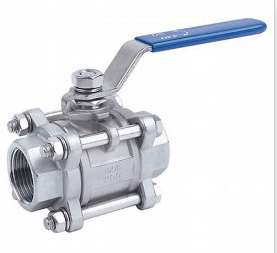ball valve body types
When it comes to controlling the flow of liquids and gases, ball valves are among the most important types of valves used in various industries. The construction of a ball valve includes a spherical disc, known as the ball, which is used to stop or allow the flow of the medium. One of the critical components of a ball valve is its body, which significantly influences its performance and application. Understanding the various types of ball valve bodies is essential for making informed decisions in design and implementation.
There are several body types for ball valves, each serving different functions and applications
. The most common types include1. Full Port Ball Valve This design features a ball with a hole that matches the pipeline's diameter, allowing the media to flow without resistance. Full port ball valves are ideal for a wide range of applications where minimal pressure drop is desired.
2. Reduced Port Ball Valve In contrast, reduced port ball valves have a smaller ball with a narrower hole. This design leads to a reduction in flow capacity and increased turbulence. Reduced port valves are often used in applications where space is a constraint or where a slight decrease in flow is acceptable.
3. V-Port Ball Valve This design incorporates a “V” shaped ball, which allows for more precise flow control. It is particularly beneficial in throttling applications where flow regulation is necessary. V-port ball valves provide more options for managing flow rates effectively.
ball valve body types

4. Trunnion Mounted Ball Valve These valves are designed with the ball mounted on trunnions, providing greater stability for large and pressure-heavy applications. The trunnion mount allows for reduced wear and tear, making them a reliable choice for high-pressure environments.
5. Floating Ball Valve In this type, the ball is not fixed but instead floats within the valve body. The upstream pressure pushes the ball against the seat, which ensures a tight seal. Floating ball valves are often used in lower pressure applications and provide excellent leak-proof capabilities.
Choosing the right ball valve body type is essential for ensuring the efficiency and reliability of a system. Factors such as the medium's temperature, pressure, and nature (corrosive, abrasive, etc.) will influence the selection. Each body type offers unique advantages that cater to different operational needs, making it crucial to evaluate the specific requirements of the application.
In conclusion, understanding the various ball valve body types equips engineers and operators with the knowledge to select the most suitable valve for their system, enhancing efficiency, safety, and performance in fluid control applications.
-
3-types-of-check-valves-maintenance-tipsNewsAug.23,2025
-
ball-valves-types-with-trunnion-mounted-designNewsAug.23,2025
-
butterfly-valve-company-production-capabilitiesNewsAug.23,2025
-
fisher-globe-valve-technical-specificationsNewsAug.23,2025
-
types-of-gaskets-for-flanges-selection-guideNewsAug.23,2025
-
wedge-gate-valve-suppliers-quality-standardsNewsAug.23,2025
-
Breakthrough in Domestic Low Temperature Valve Technology in ChinaNewsAug.18,2025




